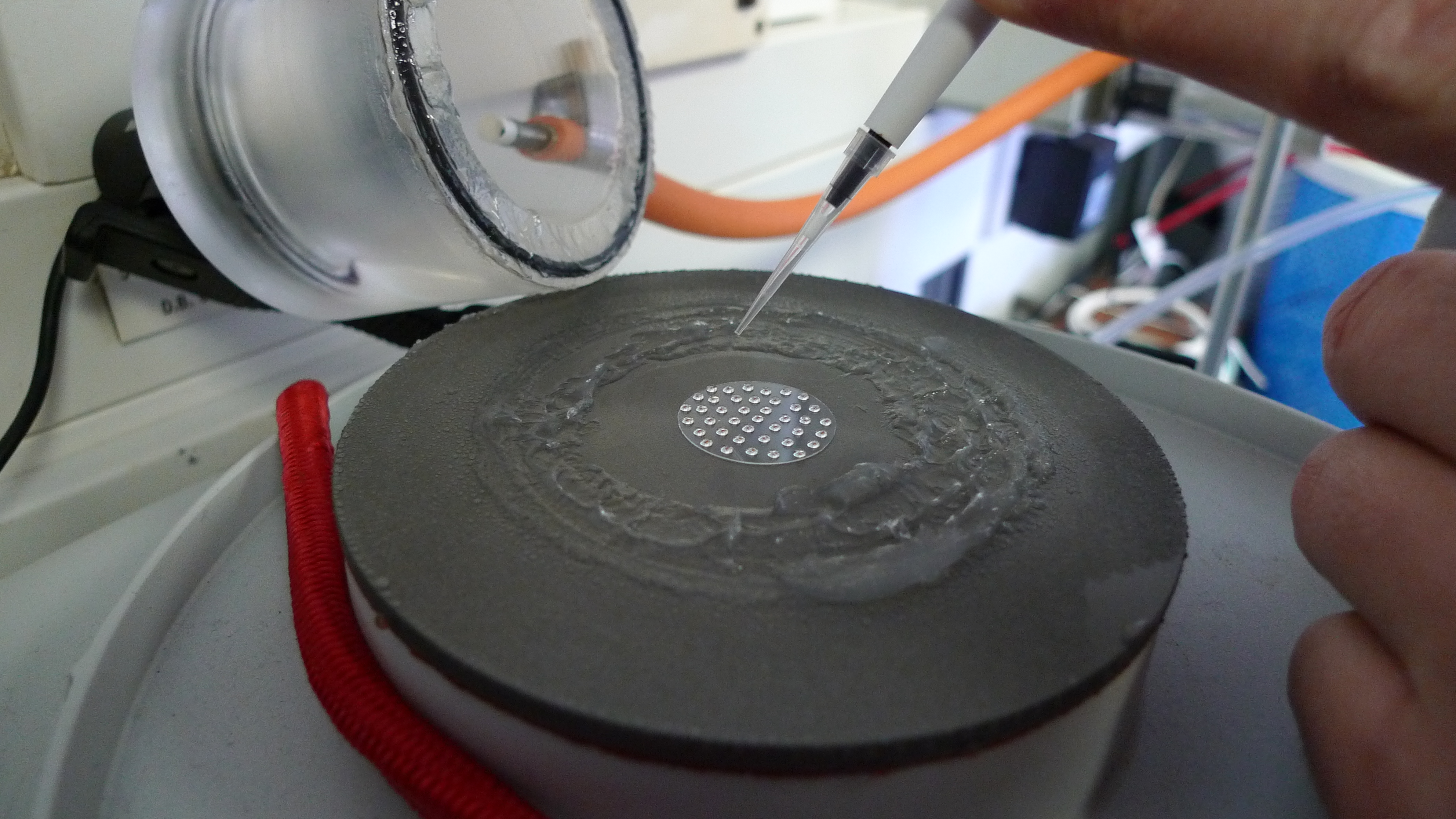Ocean life triggers ice formation in clouds
9 September, 2015
Researchers from the Arctic Research Programme, managed at British Antarctic Survey, have shown for the first time that phytoplankton (plant life) in remote ocean regions can contribute to rare airborne particles that trigger ice formation in clouds.
Results published today in the journal Nature show that the organic waste from life in the oceans, which is ejected into the atmosphere along with sea spray from breaking waves, stimulates cloud droplets to freeze into ice particles. This affects how clouds behave and influence global climate, which is important for improved projections of future climate change.

Clouds in the Earth’s atmosphere are made of liquid water droplets, ice particles or a mixture of both. Ice particles affect how long a cloud exists and how much rain, hail or snow it produces. They also help control temperature of the climate by reflecting sunlight (keeping surface temperatures cool) or trapping heat close to the Earth’s surface (keeping temperatures warmer). Climate in the polar regions is changing more rapidly than any other part of the planet, yet predictions for how it will change in future remain uncertain. This improved understanding of cloud formation is a step closer to helping reduce uncertainties in global climate modelling.
An international team of researchers investigated marine life from the biological ecosystem in the Arctic Ocean, Western Atlantic and North Pacific by collecting biological matter using a remote controlled boat launched from research ships, along with hand held sampling equipment. By combining these direct measurements with global computer modelling scenarios of the atmosphere, the team found that airborne particles from sea spray were most influential in polar and other remote ocean regions.

Dr Theo Wilson, lead author from University of Leeds says:
“Breaking waves in the ocean generate large quantities of airborne sea spray. Some sea spray particles contain biological material linked to the ocean’s ecosystem. It has been speculated in the past that some of this biological material may trigger the formation of ice in clouds – making them ‘ice nucleating particles’ (INPs) in the atmosphere. Now we have clear evidence that marine biological material such as matter exuded from phytoplankton is able to nucleate ice and could do so in the atmosphere. This could be particularly important in the polar regions.”
Co-lead author Dr Luis Ladino, who worked on this project as a Research Fellow at the University of Toronto and is currently an NSERC Visiting Fellow at Environment Canada, says:
“The team also investigated specific marine life forms in the laboratory to learn more about the material we sampled. We found that a certain species of algae (Thalassiosira psuedonana, a common type of phytoplankton) release organic material that is able to nucleate ice like the INPs we found in the sea. We think that species like phytoplankton may therefore be responsible for producing the INPs we found in aerosol particles formed from the ocean water.”
Co-author Dr Benjamin Murray from the University of Leeds says:
“Understanding the sources, fate and global distribution of particles which trigger ice formation in clouds is needed to not only improve our weather models, but also to increase the confidence we have in climate model predictions of what will happen over the coming centuries. Understanding where ice nucleating particles come from is important for predicting future climate. For example, as the polar ice caps shrink (we are heading for another record Arctic minimum later this month) there will be more open ocean from which these particles can be emitted, and this marine source of ice nucleating particles might become more important.”

This investigation was partly funded by the Arctic Research Programme – a major UK research effort (funded by the Natural Environment Research Council) to improve understanding and predictions of Arctic change, and to establish what the regional and global impacts of such change may be.
The measurements collected for this investigation were captured during two summer cruises in 2013 (aboard the RRS James Clark Ross to Greenland and Svalbard in the High Arctic) and 2014 (aboard the R/V Knorr in the Western Atlantic), from a Canadian cruise aboard the CCGS John P. Tully to the North Pacific, and via NETCARE measurements off the coast of British Columbia.
The NERC funded project, ‘ICE-ACCACIA’ was led by Dr Benjamin Murray at the University of Leeds and focused on the sources of ice nucleating particles in the Arctic. This project complemented ‘ACCACIA’ which was a major consortium funded by the Arctic Research Programme.
Authors:
Dr Theo Wilson, University of Leeds, Mob: +44 (0)7841 688513; Email: t.w.wilson@leeds.ac.uk
Dr Luis Ladino, University of Toronto, Tel: +1 416 739 5974; Mob: +1 647 821 5635; Email: luis.ladinomoreno@utoronto.ca
Dr Benjamin Murray, University of Leeds, Tel: +44 (0)113 3432887; Email: B.J.Murray@leeds.ac.uk